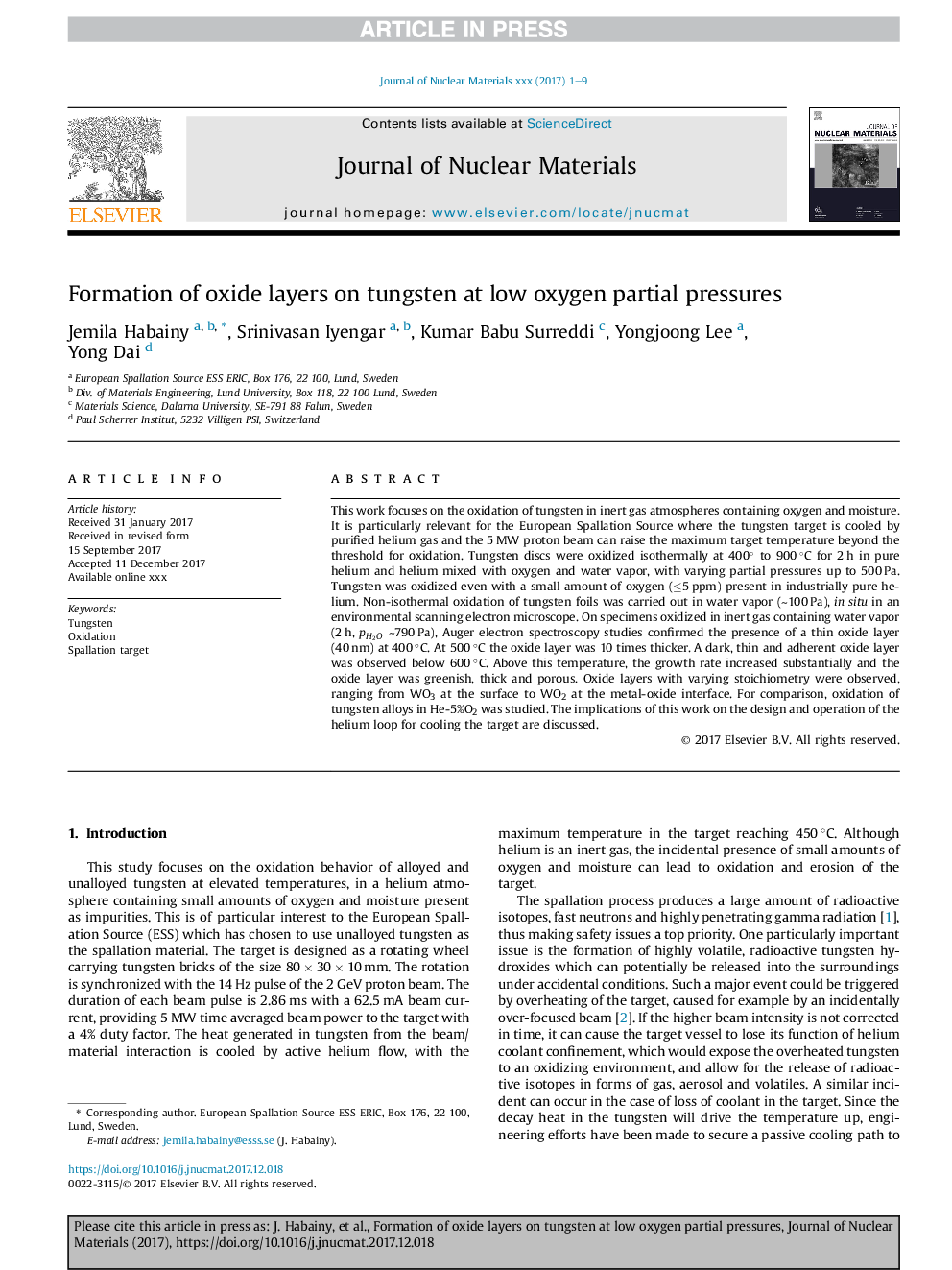| Article ID | Journal | Published Year | Pages | File Type |
|---|---|---|---|---|
| 7963112 | Journal of Nuclear Materials | 2018 | 9 Pages |
Abstract
This work focuses on the oxidation of tungsten in inert gas atmospheres containing oxygen and moisture. It is particularly relevant for the European Spallation Source where the tungsten target is cooled by purified helium gas and the 5â¯MW proton beam can raise the maximum target temperature beyond the threshold for oxidation. Tungsten discs were oxidized isothermally at 400° to 900â¯Â°C for 2â¯h in pure helium and helium mixed with oxygen and water vapor, with varying partial pressures up to 500â¯Pa. Tungsten was oxidized even with a small amount of oxygen (â¤5â¯ppm) present in industrially pure helium. Non-isothermal oxidation of tungsten foils was carried out in water vapor (â¼100â¯Pa), in situ in an environmental scanning electron microscope. On specimens oxidized in inert gas containing water vapor (2â¯h, pH2O â¼790â¯Pa), Auger electron spectroscopy studies confirmed the presence of a thin oxide layer (40â¯nm) at 400â¯Â°C. At 500â¯Â°C the oxide layer was 10 times thicker. A dark, thin and adherent oxide layer was observed below 600â¯Â°C. Above this temperature, the growth rate increased substantially and the oxide layer was greenish, thick and porous. Oxide layers with varying stoichiometry were observed, ranging from WO3 at the surface to WO2 at the metal-oxide interface. For comparison, oxidation of tungsten alloys in He-5%O2 was studied. The implications of this work on the design and operation of the helium loop for cooling the target are discussed.
Keywords
Related Topics
Physical Sciences and Engineering
Energy
Nuclear Energy and Engineering
Authors
Jemila Habainy, Srinivasan Iyengar, Kumar Babu Surreddi, Yongjoong Lee, Yong Dai,
